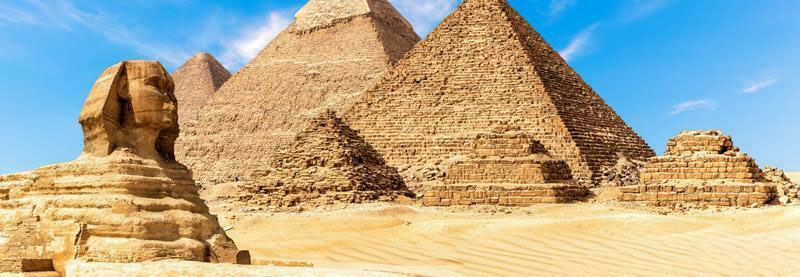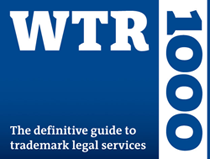Intellectual Property Insights from Fishman Stewart
Mini Article – Volume 25, Issue 11
Share on Social

Technology Digs Deep Under Pyramids
By Kristyn Webb
The Great Pyramid of Giza is one of the Seven Wonders of the Ancient World—and the only one still standing. It is one of three pyramids at the Giza plateau in Egypt. Really, all three are triumphs of architecture and construction. Their dimensions and positions align with the stars of the Orion Belt, and measurements of their prominent features yield numbers that equate to lightspeed measurements. The size of these monuments is staggering. Millions of stone blocks cut to precise dimensions, weighing thousands of pounds apiece, quarried and transported from miles away and then placed precisely to create one of the greatest engineering feats humankind has ever accomplished. Recently discovered evidence points to hydraulic-powered mechanics used in construction. All of this was done at a time in history when mammoths still walked the earth.
People have long pondered whether or not the Giza pyramids were indeed solely burial chambers, which was the only known, and archaeologically determined, use—until now. Recently, Fillipo Biondi (University of Strathclyde) and Corrado Malanga (University of Pisa) used cutting edge technology to produce scans that reveal, what they speculate, may be a vast network of underground tunnels extending below the largest of the three pyramids called Khafre, which towers 471 feet high (143 meters).
SAR technology (synthetic aperture radar) differs from other scanning technology. SAR is performed from a moving source, like a plane or a satellite, and uses short or high wavelength microwaves to construct two- or three-dimensional images. LIDAR (which uses lasers) can be conducted by plane but is weather dependent and can be blocked by cloud coverage. Ground penetrating radar can detect objects beneath the ground surface, but requires a ground-based system to operate, and thus, is often limited to relatively small geographic areas. In other words, it cannot cover as much ground as SAR.
The team used SAR to measure how vibrational energy moves within a solid substance, like the earth and the stones used to construct the pyramids. Traditional SAR scans measure vibrations over time and average the vibrations. This tends to give high spatial resolution (sharp images with fine details), but like a long-exposure snapshot, vibrations tend to be blurry. Here, the researchers used SAR to take a scan with a shorter synthetic aperture. From there, they broke the scan up into sub-apertures and extrapolated data. This is sort of like taking a series of high shutter-speed snapshots and then making a flipbook to see the movement in action.
According to Biondi and his team, the scans suggest that there are massive hollow tubes descending straight down underneath the pyramid terminating in two cube-shaped structures. The initial estimates indicate the underground network of tubes, tunnels, and chambers extends 6,500 feet wide (nearly 2,000 meters) and 2,000-4,000 feet down (over 600-1,200 meters).
As far as scientific and archeological methods, this method is novel, or “groundbreaking” if you like the pun. So, it is uncertain how accurate the results are, or whether Biondi’s interpretation of the scans will be substantiated if any excavations are authorized. Egyptologists are divided on the issue, some calling the findings an “exaggeration” or “completely wrong.” Egyptian government officials are denouncing the so-called discovery as a conspiracy theory supported by nothing more than pseudo-science.
Will these findings justify further excavations? Are the pyramids more than mausoleums? Is there an underworld underneath the structures? Is it guarded by Osiris? Most importantly, will Brendan Fraser step up if needed? Yet, only time will tell the story of these timeless structures.
Kristyn Webb is an attorney with Fishman Stewart’s Copyright Practice Group, and holds a master’s degree in copyright law from King’s College London.


Related Content from Fishman Stewart
People have long pondered whether or not the Giza pyramids were indeed solely burial chambers, which was the only known, and archaeologically determined, use—until now.
By 1930, efforts began in New York to replace Mother's Day with Parent's Day because men were more than just breadwinners. Those efforts didn't catch on, probably because in that era, women often spent more time in the home.
In February, Nike and Skims announced that they will be working together on a new brand, NikeSkims. The co-brand will create a new line of training apparel, footwear, and accessories specifically designed to meet the unique needs of women athletes.
Generally, federal courts have exclusive jurisdiction over copyright cases, and often, this presents an insurmountable paywall for individual artists and small businesses to vindicate their rights, especially where the value of the individual copyrighted works are relatively low.
Dedicated to raising public awareness about the importance of encouraging innovation and creativity throughout the world, the World Intellectual Property Organization (WIPO) annually observes World Intellectual Property Day on April 26 to showcase the role that patents, trademarks, industrial designs, copyrights and trade secrets play in our everyday lives.
Hold onto your foam fingers, sports fans – college sports just got a whole lot more interesting! The latest updates to Name, Image, and Likeness (NIL) rules are making student-athletes bigger than ever, and it’s not just about the game anymore.
Did a federal court in Louisiana recently decide that US copyrights are global rights? It seems so.
One of his most famous songs, “Lose Yourself” was recently at the center of a lawsuit. In 2019, Eminem’s publishing company Eight Mile Style sued Spotify claiming that Spotify streamed a number of its musical compositions without proper licenses.
One of the most common challenges is whether AI should be free to train on data that is protected by copyright and owned by third parties without first obtaining permission.
The U.S. Copyright Office (USCO) recently published its latest report on AI and “copyrightability.” In short, the USCO considers only some AI-generated works to be sufficiently creative as to deserve copyright protection, and thus, registration.
IDENTIFYING, SECURING AND ADVANCING CREATIVITY®













